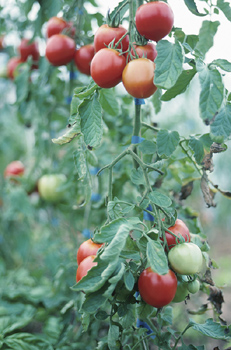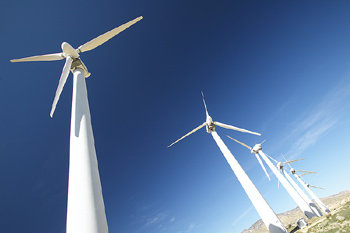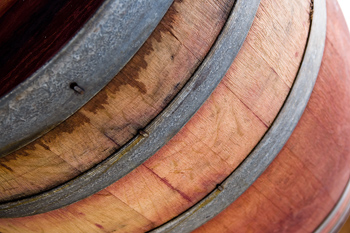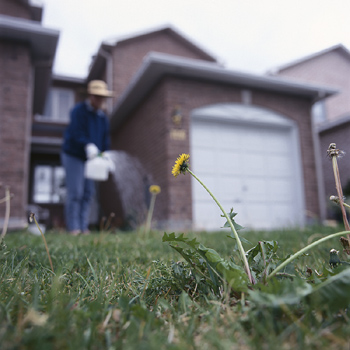Archive for the ‘Green Ideas’ Category
Healthier Carpets

Traditional carpeting is present in most home in the United States. However, it’s not a safe or environmentally sustainable product. It also wears out quickly and can’t be recycled. If you’re concerned about your home’s ecological impact, avoiding this kind of carpeting is important. Instead of a traditional carpet, look for other options. There are healthier, greener carpets out there that will work just as well.
Conventional carpet is synthetic, made from nylon, acrylic, polyester, or polypropylene. It’s backed with PVC, polyurethane, or synthetic latex. These materials can be toxic, and contain a number of chemicals that may leach out of them over the years. They’re also treated with other chemicals, like dyes, fire retardants, antistatic treatments, fungicides and stain proofers. Installing a conventional carpet isn’t healthy or environmentally friendly, either. VOC (volatile organic compound) containing adhesives are dangerous, too.
You can improve standard carpet by installing it using a low VOC adhesive, or by installing modular carpet tiles, so that a single piece can be replaced instead of the entire floor. However, the resources used in making carpet are still non renewable and not the healthiest of options. Fortunately, there are some ecologically friendly alternatives available.
Carpets made from recycled materials are starting to appear. Made out of discarded soda bottles, wool, cotton, nylon, and even old carpet, these use less energy and keep items from going to the landfill. You can also get recycled carpet pads. Tacking your carpet to the floor instead of gluing it removes concerns about VOCs from adhesives, and the carpet remains attractive and soft.
Before the age of synthetics, carpeting was made from wool. You can still get carpet made from sheep or llama wool, which is biodegradable and renewable. This carpeting has a richer texture and lasts longer, as well as naturally being resistant to dirt, fire, static, and moisture. Conventional carpets all have to be chemically treated to have these properties. Wool carpet is also less hospitable to dust mites than synthetics. However, most wool carpeting is treated with an anti-moth chemical, which may off gas. Look for untreated wool carpet with a jute backing that is dyed with natural colors.
Wool carpets must be kept dry and vacuumed regularly. Clean it with natural cleansers and install it like recycled carpeting to reduce the impact it has on the environment and make it healthier. This material is more expensive than a synthetic, but it’ll last longer and feel better.
Plant fibers are another biodegradable, untreated, VOC free option. Sisal is the most popular, but sea grass carpeting and other plants and reeds are also a possibility. Jute carpeting, coconut fibers, and abaca are also popular. They’re usually backed with urethane or latex, and may be undyed. That’s because many plant fibers don’t dye well. If you like the natural greenish browns of sea grass and jute, however, they’re excellent and unique looking choices.
Efficient Heating and Cooling – Why It’s Important And What You Can Do

Most of us want to be sure our homes stay at a comfortable temperature, but keeping them that way can use up a lot of energy. Of course, any behavior that raises energy use also increases the rate at which we use the fossil fuels we burn for power. These fuels are not only in limited supply, but their burning increases the number of greenhouse gas emissions, as well as lower level pollution. If you’re concerned about the environment, efficiently heating and cooling your home are important things to pay attention to.
Fortunately, that are a number of things you can do to improve your home’s efficiency. How we heat and cool our houses makes for a significant part of most Americans’ carbon footprint – as much or more than even our driving habits. By improving your home’s efficiency, you’re making a big difference in how much energy you use. Many of the changes you can make are simple and easy.
Installing a programmable thermostat with Energy Star certification makes it easy to keep your home at the desired temperature. Turn it down a little more in the winter and up a few degrees in the summer – most of us don’t notice, but it makes a big difference. Remember that your windows and doors should be well sealed to prevent air leaks, and that you can use insulated blinds and drapes to help reduce heat loss or gain in your home. Installation of ceiling fans will improve energy efficiency, too. You can use them in the summer, or in the winter by reversing the direction of the blades. Fans also make the air in your home a lot healthier.
Insulation makes a big difference, too. Most homes don’t have enough insulation, especially in the attic. Adding more may take a bit of effort, but it’ll safe you money in the long run. Remember to have your furnace serviced regularly, too. If it’s too old, replace it with a more efficient model – this might be expensive to start, but it’ll soon pay for itself. The efficiency of some old furnaces is no more than fifty percent!
Making your home’s heating and cooling more efficient is one important step towards greater sustainability, and a smaller carbon footprint. Plus, you’ll save money on energy bills, too. Take a look at your house and see what changes you can make for a better, more efficient home.
Start Your First Vegetable Garden

Having a vegetable garden of your own is definitely a great option. It is the beginning of April now and you may be wondering if you can start your garden now and how to go about taking on this task. If you haven’t done gardening in the past or you would like to know how to do it more successfully, here are some tips and ideas that can help you out.
First of all, you need to realize that there are many different climate zones out there. Not every climate is going to be the same. However, in many climates, mid March is a great time to begin some of the cold weather crops, which can include radishes, salad greens, and even peas. You can also start some of your other plants, such as tomatoes inside.
April happens to be a great time to plan the cold weather crops as well. Many other crops other than the ones we mentioned can also be planted at this time, such as early carrots, onions, and early new potatoes. This is a great time to find wild dandelion greens to make salads with.
Once May comes along, everything becomes easier. The temperature gets warmer, the soil temperature is rising, and it is a great time to plant about anything. Now you can plant those warm weather crops from seeds, such as summer squash and beans. Any plants you started indoors, such as eggplants, peppers, and tomatoes can be moved to an outdoor garden during this time as well.
Maybe you are looking for crops that are easy for you to grow, since it is your first vegetable garden. Some great easy crops you may want to try out include zucchini squash, peas, rutabaga, peas, and onions. They can be planted fairly early too. Peppers and tomatoes are fairly easy to grow too. Just ensure you start them inside before you take them outside to plant.
One important thing to remember is to avoid the itch to plant to early. Many people make the mistake of planting tender crops, such as watermelon, squash, beans, and tomatoes too early. It gets warm for a bit and then you get a frost a couple weeks later, wiping out your small plants. Instead of following the weather, look at the dates of the last expected frosts. This way you won’t plant too early and end up losing all that hard work.
If you only have space for a small garden, you’ll want to be careful what you plant. Watch out for some of the plants that take up a lot of space, such as squashes, corn, and pumpkins. Look for items that won’t take up so much room. If you do go with corn, always put it on the north side so it won’t shade all the other plants. There are some bush varieties of these plants to consider as well that won’t take up all your garden space.
Secrets behind Wind Turbine Technology

In some places of the world, wind turbine power accounts for ten percent of the total electricity consumed. This is, sadly, a very small fraction of the power generation and consumption coming from coal plants as well as from solar panels. Still, it is progress that we should welcome for the simple reason that taking it one step at a time is better than taking no steps at all in the right direction.
To take these small but important steps towards cleaner electricity through wind power, it is important to know about the secrets, open these may be to anyone interested, behind wind turbine technology.
Turbines in Relation to the Generation of Electricity
Think of your ordinary electric fan – it generates wind by using electricity. Now think of the wind turbine although in a reverse mode – it generates electricity by using wind. The technology behind wind power can be summed up as simply as that statement.
But of course, electricity generation is hardly ever that simple. Let’s put it this way for the non-techie amongst us. The turbine blades are designed so as to capture the maximum amount of wind, which will cause them to rotate. In turn, the rotation spins the low-speed shaft gear connected to the high-speed shaft gear, the latter of which is housed inside the generator housing.
The domino effect is such that the electrical current generated by the movement of the gears, shafts and rotors are then fed into the main grid or a battery pack. You will then enjoy the benefits of electricity.
Residential Wind Turbines
Lest you think that you cannot have a wind turbine in your home, think again. Although you should ask local authorities and consider environmental conditions in your area, you can avail of residential wind turbines starting at around $12,000 each.
If you think that it is too much money, do consider that energy tax rebates are available that can lessen the final cost of the unit. Plus, you can recoup your investment through lesser dependence on the main grid, not to mention that your carbon footprint on our already beleaguered planet is also significantly lesser.
Just to give numbers to this eco-friendly fact, for every kilowatt-hour of wind turbine-generated electricity consumed, about 1.5 pounds of carbon emitted into the air by coal-powered plants can be avoided. You do know that carbon dioxide is one of the major contributors to global warming, don’t you?
Passing of Wind Considerations
We are talking about placing your residential wind turbines in an area where the maximum amount of wind can be experienced. An average residential turbine requires wind speeds of 10 miles per hour to generate electricity. So, if you live in an area with little to no wind, you should opt for solar panels. But if you are really enthusiastic about wind power, you should look into turbines that can operate on 5 miles per hour wind speeds. And with blades as large as 20 meters, you must make sure that the neighbors will not be disturbed by the rotations.
As with any other methods of power generation, wind turbines have their merits and demerits. Still, when it comes to clean energy from wind power, we are willing to take the cons with the pros anytime of day.
Organic Materials for Rainwater Tanks

Rainwater is precious simply because it is water. You can use it for a variety of purposes from watering the plants to washing the clothes and even taking a bath. It is clean, clear and free. Still, not so many homes have rainwater tanks because of the misconception that these containers are ugly additions to the house. This is not true nowadays because of the availability of rainwater tanks in various shapes, sizes, colors and materials to suit every style preference and water need.
Plastic Tanks
We have been around plastic products for so long that there is bound to be one in every category. This is true of rainwater tanks made out of food grade plastic, which is also called polyethylene. The advantages of plastic tanks are that it is relatively light, durable and affordable. You only need to place it on a sand base to start usage, which can last anywhere from 15 to 25 years. You can purchase them at bargain basement prices especially from online sites.
Unfortunately, plastic tanks are made from petrochemicals. As any eco-friendly consumer knows, petrochemicals are not exactly the friendliest of materials to work with where Mother Nature is concerned. But if you can have it recycled, your conscience can be assuaged.
You may also have issues with the taste of the water especially under the hot sun, which many have described as, well, plastic-y. We suggest not drinking the water in this case just to be on the safe side.
Steel Tanks
Galvanized tanks have been with our society for at least 150 years. You will discover that these are often the most affordable water tank although durability may be a minus factor. Most of steel tanks will last for a maximum of 5 years before rust sets in.
The 5-year life expectancy does not apply to all galvanized tanks. You will find top-of-the-line steel tanks that will last for 10-15 years like Zincalume. Colorbond claims a 20-year life soan but it can be substantially shortened by deep paint scratches leading to faster corrosion.
Concrete Tanks
You can install concrete water tanks either above or below the ground, either of which has its merits. For example, if you install the tank below the ground, you can save space but if you can install it above the ground, you will be able to save time on cleaning the tank.
No matter the location of the water tank, you must place a polyethylene liner all around the interior of the concrete material. This way, lime will not leach and you will not end up with alkaline water. Plus, you may have problems with corrosion of the steel framework without the liner.
Fiberglass Tanks
Fiberglass is very durable materials for rainwater tanks in addition to being unaffected by chemicals. You may also install them above or below the ground. However, fiberglass tanks are more prone to algae growth and tend to crack easily. These issues are usually solved by painting the tank and making regular inspections, respectively.
Ultimately, your choice in the materials for the rainwater tank will depend on your budget as well as your sense of environmentalism. No matter which tank you choose, however, it cannot be denied that the savings you have in water consumption are well worth the price of the tank.
Organic Ways to Get Rid of Cockroaches

While cockroaches really are not all that ‘evil,’ their presence is not exactly welcome. No one wants to see their home or dwelling overrun with cockroaches which is why it is necessary to take the proper steps required to get rid of them. However, the common ways of ‘evicting’ cockroaches are not exactly friendly from the environment. They are also not exactly safe for humans. No, spraying roaches with pest poisons would probably be a plan well worth avoiding. Of course, this does raise questions regarding how to actually get rid of the roaches. For those with such concerns, here is some helpful info: there are environmentally green friendly ways to remove those pesky roaches from your home.
Probably the best and most environmentally ways to prevent the infestation of cockroaches in the home would be to employ preventive maintenance skills. This will significantly help reduce if not outright eliminate the presence of roaches in the home.
For example, roaches are attracted to food sources. That is why it is so very necessary to clean up all your dishes and food preparation areas thoroughly. Don’t leave dirty plates out overnight since this will be an invitation to the cockroaches. In addition to cleaning up your own food area, you will want to clean up your pet’s food area as well. Again, this will eliminate many of the attractors that pull in roaches from the outside.
Speaking of the outside, you definitely do not want to have any cracks in your home’s foundation that allows roaches to gain easy access to the premises. If you do notice there are ways that cockroaches can enter the home, use a sealant to block their port of entry.
It is also important not to do those things that can lead to bring in roaches from the outside. Namely, you do not want o add anything to the home that might contain cockroach eggs. Dirty crates from the supermarket, for example, may be a common way eggs get into a home or apartment. Once the eggs are inside, it is only a matter of time before they hatch.
Roaches love dampness and that means if you want to reduce their presence you will need to reduce the amount of dampness in the home. That means that leaky sink needs to be fixed pronto! And it also would not hurt to add baking soda to floors where links seem common. This will absorb the leaks and reduce the potential for roach infestations to occur. Clearly, that would be a good thing.
When you already have roaches and need to kill them, it is best to use organic compounds since these are non-toxic to humans. Mixing borax, sugar, and flour into a paste will kill roaches as well as any poison but without the toxic side effects that chemical poisons can deliver. Even putting oil in a pot of water can work since it will lead to the roaches being trapped and drowned. Again, this prevents any toxic infestations from occurring which is certainly a good thing.
Yes, there is a way to safely get rid of roaches in an environmentally friendly manner. What a shame most people are unaware of such a process.



